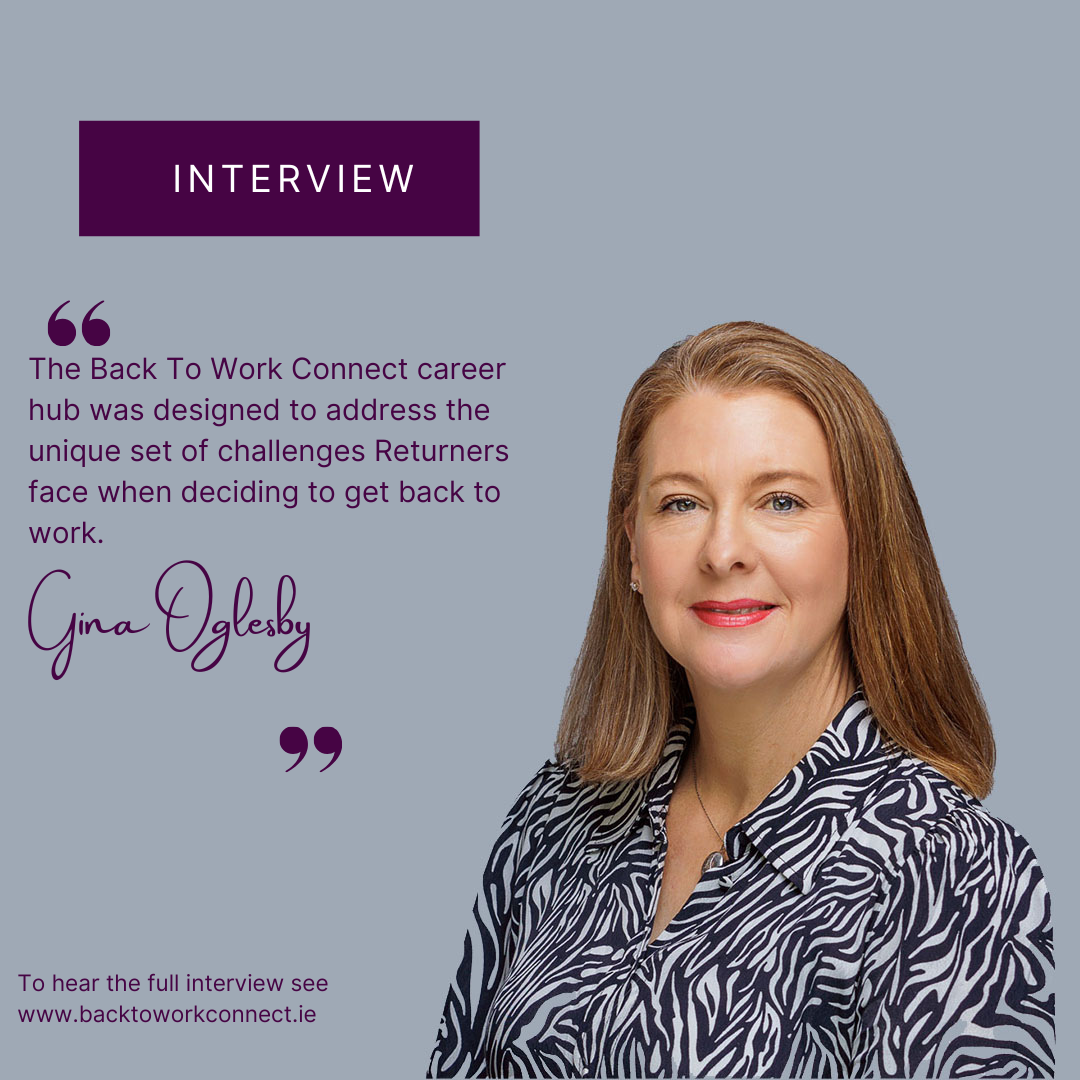Building balance in the next normal
Anne-Marie Taylor Founder Career Returners; Non-Executive Director; Executive Coach
Our world has been upended, with ramifications in many spheres including gender balance in the workplace. The business case for gender balance is well-proven at this stage. In particular, diverse teams are more innovative, and innovation is vital in responding to unprecedented challenges. If ever there was a time for diverse thinking and diverse teams, this is surely it.
However, we simply don’t know the medium to long term effects the current upheaval will have on gender balance. Although it’s early days some interesting research and opinions have emerged.
On the one hand many fear that gender balance will be damaged by the pandemic. Others believe changing working structures will benefit women. This article summarises the arguments on both sides and includes suggestions at the end on how organisations and individuals might actively influence the potential positive outcomes and minimise the potential negatives.
Potential Negative Impacts
1. Loss of jobs
Job losses are disproportionately impacting women. The World Bank warns“gender gaps could widen during and after the pandemic and gains in women’s and girls’ accumulation of human capital, economic empowerment and voice and agency, built over the past decades, could be reversed”. Women accounted for 55% of 20.5 million jobs lost in the US in April, reflecting their over-representation in the hospitality, leisure and education sectors.
A paper by the Department of Employment Affairs and Social Protection on the initial impacts of Covid-19 on Ireland’s labour market shows the greatest job losses are in accommodation services, wholesale/retail services and construction. The authors note that the labour market recovery may take longest to reach the sectors where those typically employed “are disproportionately the young and women.”
2. Career impact
For women who do retain their job there are other challenges. Balancing having children at home with working remotely is tricky, arguably equally tricky for both parents. Ask most mothers and they’ll tell you just who is picking up most of the extra effort. A recent New York Times survey found that “nearly half of men say they do most of the home schooling. 3 percent of women agree”. For couples where both are working full-time remotely, two out of three women described themselves as most responsible for housework. Many women who have been accommodating a full-time career and parenthood now find themselves managing most of the family’s domestic and childcare needs while still maintaining their full-time career.
The consequences are twofold. Firstly, women are on a constant treadmill – working, maintaining a professional presence on video calls, home schooling, general childcare, making endless meals, and managing the household. Many won’t discuss this with managers in case they’re perceived as not committed, not up to the job and become more vulnerable to losing their job. Many women also fear the social backlash questioning their parental commitment when they talk about balancing childcare and career.
Secondly, their careers may be put on the back burner. In many dual income households, the man has the higher paid job, or the job with less flexibility. Anecdotal accounts indicate the man’s job is prioritised when both have clashing Zoom calls, and the children need to be supervised. It will be interesting to see if it’s borne out when research catches up.
One well publicised example is the impact on the number of academic papers submitted by researchers. The Lily published an article with evidence from several journals that women are submitting fewer academic papers relative to male counterparts. In one journal, submissions from men increased by over 50 percent relative to the same period last year, with no corresponding increase in submissions from females. Dr Elizabeth Hannon, deputy editor of the British Journal for the Philosophy of Science, generated quite a twitter storm when she posted: “Negligible number of submissions to the journal from women in the last month. Never seen anything like it”. Prof James Wilsdon says “We have to be very cautious that we are not privileging those who are able to use the coronavirus situation as time to race ahead of their peers, who are held back not by talent or aspiration but by the need to do home schooling and put three meals a day on the table”. Given that progression in academia is closely tied to publications, women are at risk of finding themselves left behind.
Another potential consequence for women’s careers is even more insidious. Many companies, with the best of intentions, are introducing family-friendly arrangements to help workers through the next few months when childcare facilities are unlikely to be available. Others offer ongoing flexible and remote working options. It is important to track the gender take-up of such options and to make sure they don’t damage women’s careers. Harvard Business Review research (pre-pandemic) showed that family-friendly “accommodations” can derail women’s careers. Research conducted by the 30% Club Ireland also showed that both men and women believed that flexible working would negatively impact their career progression.
Will this still be the case in future? Will remote working limit career prospects? How will it impact visibility? Networking? Obviously, these questions apply to men and women but if women disproportionately avail of remote working they will be impacted more.
A variation of this situation could be summarised as “real workers go back”. Organisations need to guard against stigmatising those who can’t go back to the office or overlooking them for career development. Given that childcare falls disproportionately to women, this is a particular risk for working mothers.
3. D&I initiatives being cancelled / put on the back burner
With many pressing issues, gender diversity risks being side-lined. For example, in the UK, gender pay gap reporting has been suspended. A survey of diversity network leaders in the UK reflected concern among four in ten D&I professionals that diversity would fall off their organisation’s agenda. Understandably, urgent matters must be given priority at the moment, but it is important not to reverse gains so hard won in recent years.
Potential Positive Impacts
Are there any positives? There is less written about potential benefits though that doesn’t necessarily mean that the positives can’t outweigh the negatives.
1. Remote working and flexibility
Remote working is here to stay. Many commentators argue this will benefit working women who have long been seeking flexibility in working arrangements. The Centre for Economic Policy Research in the UK notes that “many businesses are adopting work-from-home and telecommuting options on a wide scale for the first time. If these arrangements persist, they will disproportionately benefit working women.”
Research by Catalyst shows that flexibility is a key talent management strategy for retaining top talent, particularly women. They note that when flexible work is not available, women downsize their career aspirations more than men do.
However, as discussed earlier, the jury is still out on whether remote working will ultimately prove to be a blessing or a curse for women’s advancement.
2. Increased role of men in childcare
More men are having first-hand experience of the childcare needs of their own families. According to the US National Bureau of Economic Research (NBER), “the crisis is likely to generate a large, if temporary, upward shift in men’s participation in child care, with a sizable fraction of married men taking the main responsibility, in most cases for the first time”.
Indeed, many working-from-home fathers have become the primary childcare providers, particularly where their partner has a front-line role and is out of the home. NBER expects this is where the biggest impact on the division of labour will be. The Centre for Economic Policy Research estimates that, in the UK, 63% of fathers are staying at home during the lockdown, and about one third of these live with women working long hours in critical sectors.
Will this redistribution of childcare and household roles be sustained post-pandemic? The US National Bureau of Economic Research thinks so: “Based on the persistent effects of other shocks to the household distribution of labour in the past, we expect this shift to lead to a substantial increase in men’s future participation in child care.” They note that in countries such as Germany and Sweden generous paternity leave policies led to increased involvement of fathers in their children’s care for years afterward. This is a benefit both for society and for gender balance in the workforce.
In a recent Bloomberg article, Kathy Matsui, Chief Japan equity strategist at Goldman Sachs Group Inc, noted that “If Japan embraces greater flexibility in working styles, and if the unprecedented amount of time some Japanese men are currently spending at home encourages them to take on a greater share of housework, then I hope we will see more women being liberated to pursue full-time careers.”
The Centre for Economic Policy Research argues that increased exposure to childcare responsibilities might give male managers and CEOs a better appreciation of the challenges that many of their female colleagues experience. The authors of a recent article in the Harvard Business Review, Gender Equity Starts in the Home, argue that “when men genuinely enact equal partnership at home, it accelerates gender equality at work”.




